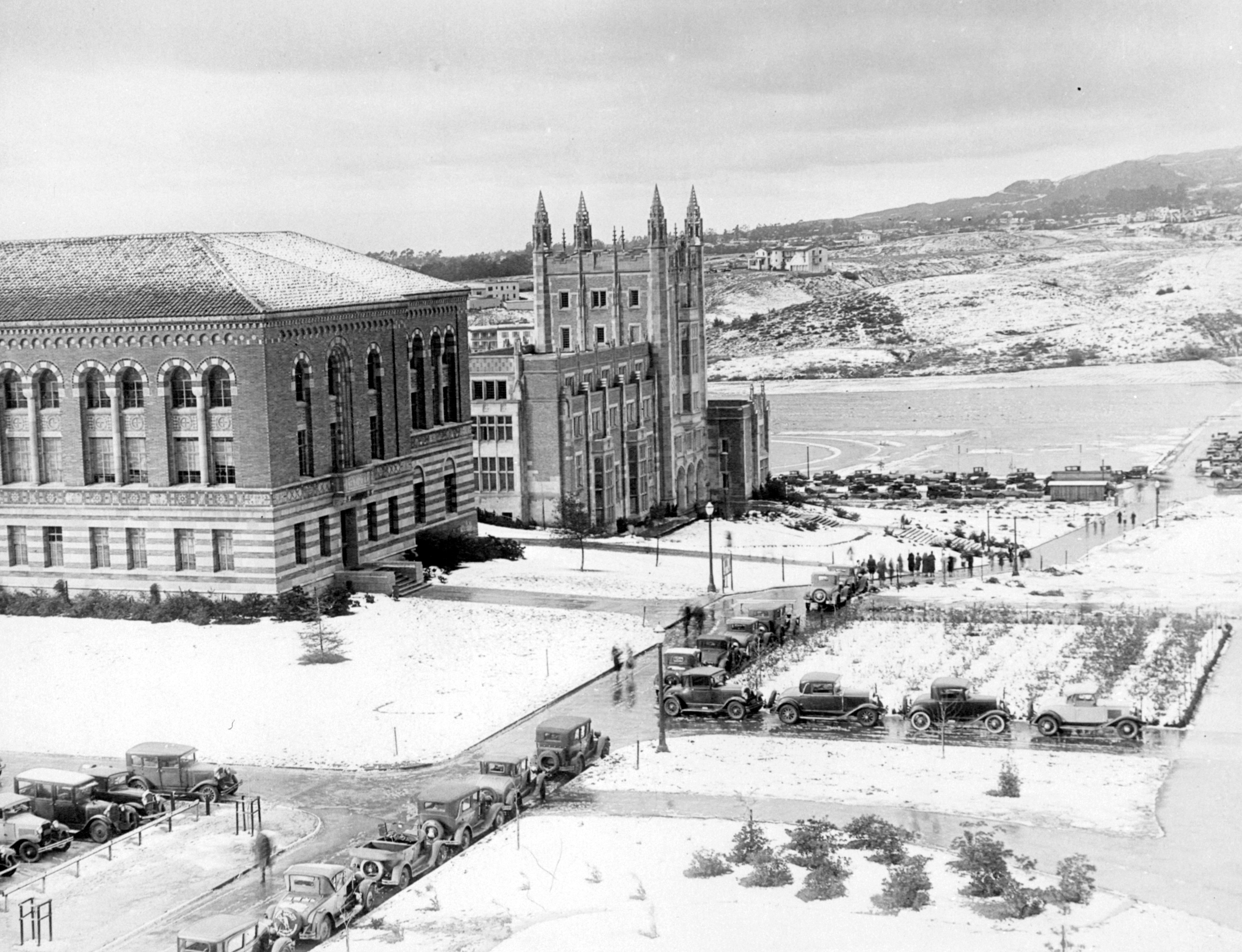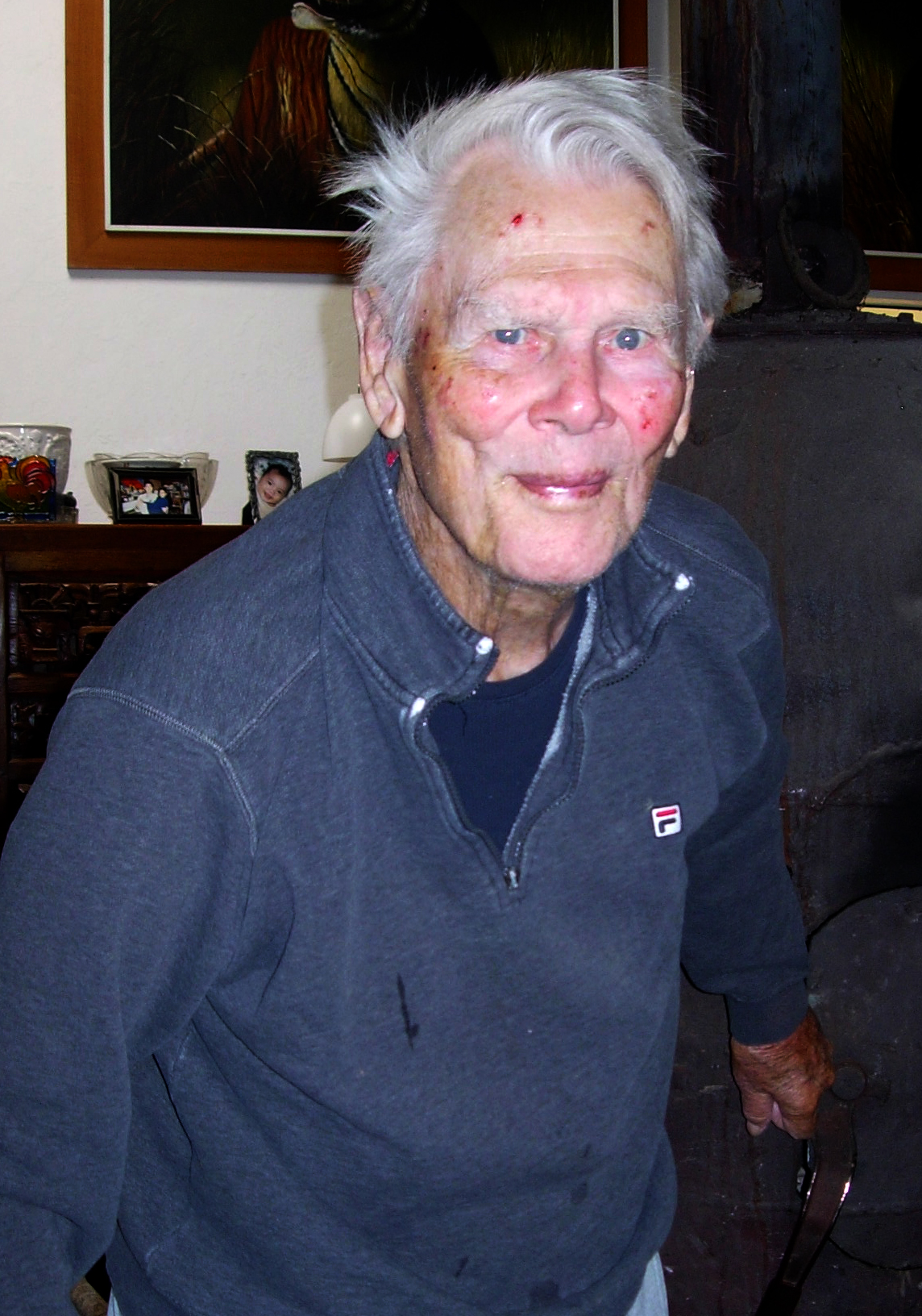
photo by Lee Talbert and UCLA archives
It’s safe to say that things in Los Angeles were a little different when 17-year-old Lee Talbert enrolled at UCLA in 1931.
UCLA’s Westwood campus was in its infancy, having just relocated from the school’s original Vermont Avenue site. A brand-new building, Kerckhoff Hall, had just been dedicated as the official student union at the time Talbert was a first-year student.
Talbert commuted to class from his family’s home in nearby Pacific Palisades in a 1927 Model T pickup truck, when gas was roughly 30 cents a gallon and the area was a far cry from the metropolis of today.
As a pre-engineering student, Talbert took courses in surveying that marked the beginning of the campus’ growth.
“We surveyed all of the neighborhood there ““ there were only a few houses. The campus was pretty much it, because they’d just built it,” he said.
Talbert completed his first two years of engineering at UCLA, though in the 1930s students had to complete their degrees at the main Berkeley campus. Talbert chose instead to transfer to Colorado School of the Mines to complete his studies.
“I went back to Colorado School of the Mines back that fall and my father gave me $600 at the start of the year. It had to last me from the start of the year. I paid my tuition, books, fraternity dues and room and board at the fraternity and my spending money ““ for 600 bucks. Back in those days, a buck went a long way,” he said.
Among Talbert’s fondest college memories, however, was during the historic snowfall that the UCLA campus saw during the 1933 school year. While he headed to his chemistry lecture in the Chemistry Building (now Haines Hall) with his friend Les Pew, the snow proved too tempting to ignore.
“We went past Royce Hall and some kids had rolled up a big ball of snow. There was 3 inches of snow on our whole campus, all over the lawn. They had taken (the snowball) up to the balcony on Royce Hall and put it on a balustrade and they were taking handfuls of snow off of it and they were pelting it at anybody down below,” Talbert said. “They were having a ball, so we thought we’d get in on the fun or at least see what it was all about.”
While Talbert and Pew went to investigate, they were unknowingly about to get caught in the wrong place at the wrong time.
“Right shortly behind us was one of the campus cops coming. … He made the mistake of walking directly underneath the big ball of snow and somebody pushed it off the balustrade, hit him on the shoulder and knocked him down ““ let me tell you, that was one mad cop,” he said.
As Talbert and Pew reached the Royce balcony, the commotion had vanished, and they were left alone at the scene of the incident.
“The minute before, there had been a whole bunch of guys up there, so we decided that was a bad place for us to be and we started out of there ““ just in time to meet this cop,” Talbert said.
While they had to prove their innocence, the man was convinced that Talbert and Pew wouldn’t have stuck around long if they’d actually been behind the prank.
“All we were guilty of was curiosity,” Talbert said.
Once Talbert reached class, he recalls other pranksters throwing snowballs into the lecture hall.
“A bunch of guys got outside, had a bunch of snow balls and threw the doors open and started pelting them inside of the classroom. It was definitely the event of the day at UCLA.”
